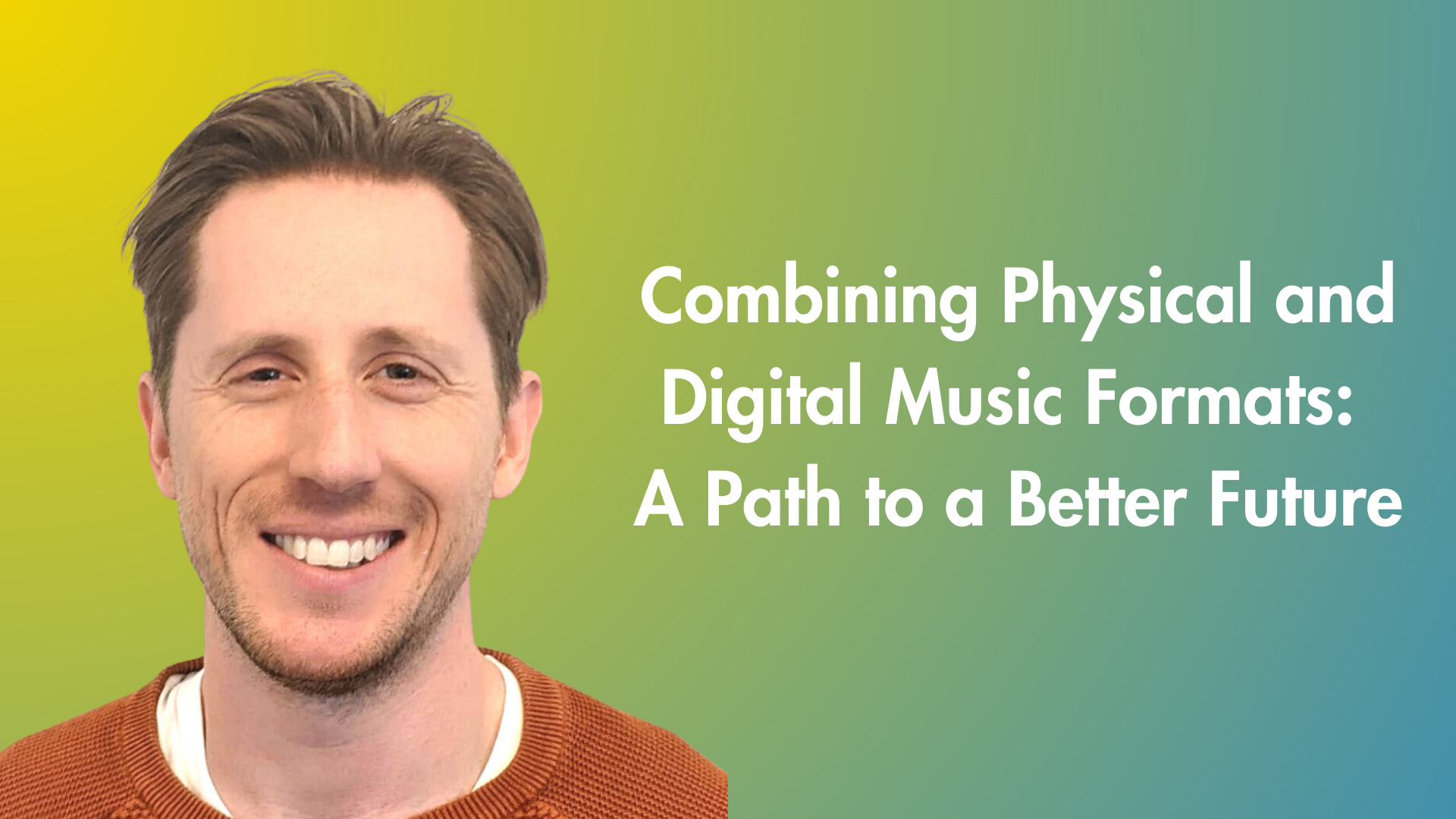By Jamie Parmenter, Founder, SpinBard
In the ever-evolving landscape of music, one thing remains constant: our love for the tangible. While digital formats have made music more accessible than ever, there’s something special about holding a piece of music or something that ignites a music memory. This could be anything from a vinyl record, a CD, or even a T-shirt purchased at a gig. Physical formats and merchandise hold nostalgia and authenticity that streaming alone often cannot capture.
But what if we could harness the power of both? By combining the benefits of physical and digital music formats, we can create a future for music that is not only sustainable but also meaningful for fans and artists alike.
The Resurgence of Physical Music Formats
Despite the rise of digital music, physical formats are far from obsolete. In fact, vinyl record sales have surged in recent years, seeing consistent growth over the past decade, with 2024 marking the 17th consecutive year of increased sales in the UK. Vinyl now accounts for around 23% of all albums purchased in the UK, surpassing CD sales for the first time in decades.
This resurgence reflects a growing desire among listeners for a deeper, more tangible connection to their favourite music. Physical formats allow us to connect with music in a great way—whether it’s the feel of an LP in your hands, the visual storytelling found in album covers or the stories behind what the music means to you as a fan.
Why Digital Formats Still Matter
While physical formats are on the rise, streaming is still the predominant way people consume music, accounting for 84% of the global music market. The benefits of digital formats—portability, convenience, and the instant ability to discover new music—cannot be ignored. Artists can reach audiences worldwide, allowing their music to travel faster than ever before. With playlists, streaming, and digital media, artists and listeners share a dynamic ecosystem that constantly evolves.
Blending the Physical and Digital
The gap between physical and digital has often been seen as a challenge, but it presents a powerful opportunity when combined.
ABBA’s “Voyage” concert experience made headlines for its use of holograms combined with a collectible physical box set.
Jack White’s Third Man Records “Vault” subscription service allows fans to receive physical packages containing rare records, posters, and exclusive artwork, while also providing access to digital content and recordings.
Bandcamp often helps artists create opportunities to combine physical merchandise with digital releases and Serenade have been combining physical objects with NFC chips linked to albums and additional extras.
As founder of SpinBard, we’re building a bridge that allows artists and fans to blend the experience of collecting physical memorabilia with exclusive digital content. Through our collectible cards, we provide fans a unique way to support artists and engage with their music.
A Future Where Physical and Digital Support Each Other
By combining the best of both physical and digital worlds, we can reimagine how music is experienced. They can create dynamic connections that bring fans closer to artists, blend memorabilia with exclusive digital content, and generate deeper, long-term engagement.
For artists, this presents an opportunity to break away from the dependency on streaming revenue alone, which often falls short of sustaining their careers. By merging the physical with the digital, artists can create multiple revenue streams and cultivate a community that values more than just passive listening. Fans get an experience that feels personal and exclusive, allowing them to build lasting memories tied to physical items they can treasure.
The power lies in the connection—the way physical memorabilia can evoke memories and how digital content can expand those moments, letting them live on in a new way.

